What Do You Need to Know About Jewelry Manufacturing Inspections?
Are you worried that your next jewelry shipment will be full of defects? This can destroy your launch timeline and your brand's reputation. Understanding inspections is the key to guaranteeing quality.
Jewelry manufacturing inspections are a series of quality control checks at every production stage. They ensure the final product meets your design, quality, and safety standards. This is vital for exporting to markets like the EU and US, which have strict rules on materials.

This might sound simple, but the details are what separate a successful product line from a failed one. I've learned over many years in this industry that you cannot just trust the factory to get it right. You need a system. Let's break down exactly what these inspections involve so you can avoid costly mistakes and protect your business.
What is a Jewelry Manufacturing Inspection and Why is it Important?
Launching a new jewelry line is exciting. But one bad batch from your manufacturer can kill your sales momentum and your profits. Mastering the inspection process1 protects your investment and your brand.
A jewelry inspection is a formal quality control process. It checks everything from raw materials to the final packed item. It is vital because it catches errors early, saves money, protects your brand’s reputation, and ensures you meet legal safety standards in your target market.
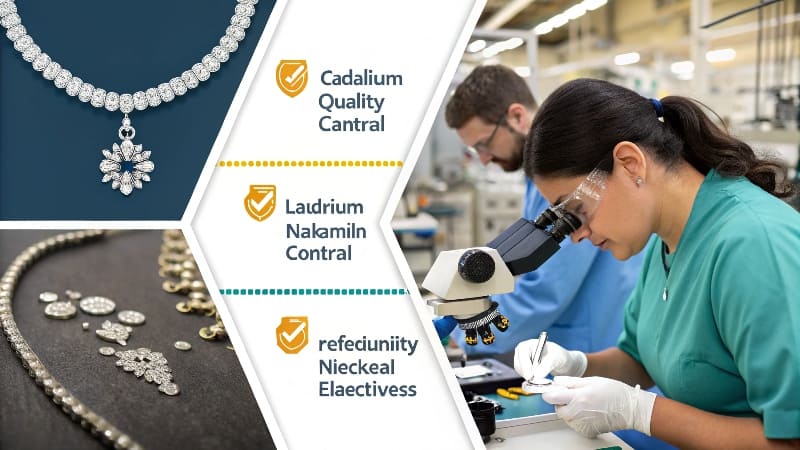
Based on my experience, inspection is about more than just finding a broken clasp before a customer does. It is about creating consistency and trust. When you implement a strict inspection plan, you are doing three things. First, you guarantee that every piece of jewelry your customer receives is as perfect as the last. This builds brand loyalty. Second, you build a better relationship with your manufacturer. When they know you check everything carefully, their own internal quality control improves. They become more careful. Third, you save a lot of money. Fixing a mistake in the wax mold costs almost nothing. Recalling thousands of finished necklaces because the plating is wrong can bankrupt a small business. Think of it as essential insurance for your production.
What is Inspected During Jewelry Manufacturing?
You approved a perfect sample. But the bulk order arrives with sloppy details and poor finishing. You need to know exactly what to tell your inspector to check for to prevent this.
Inspectors check material quality, dimensions, colors, plating thickness, stone settings, and overall workmanship. They compare the products against your approved sample and technical specifications. This ensures every piece is consistent and meets your high standards.
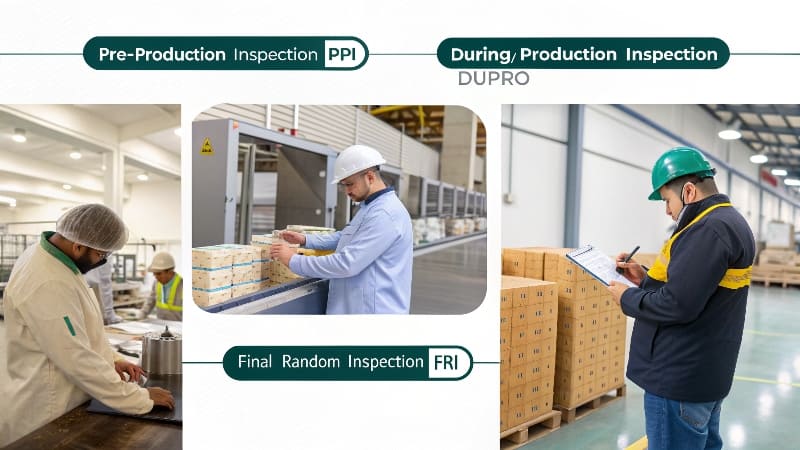
To make sure nothing is missed, I always create a detailed inspection checklist2 for every new design. This document goes to my team and the factory's quality control department. It leaves no room for mistakes or misunderstandings. Your checklist should be very specific and cover all the key points of your design.
Key Inspection Points
| Aspect | What to Check for |
|---|---|
| Raw Materials | Is the metal correct (e.g., 925 sterling silver)? Are the stones the right quality? Are the enamel colors an exact match? |
| Dimensions & Weight | Does the piece match the technical drawing? Are the length, width, and height correct? Is the weight within tolerance? |
| Workmanship | Is the polishing smooth with no tool marks? Are there any sharp edges? Do clasps and closures work properly? |
| Plating & Finish | Is the plating color even? Is the thickness correct (measured in microns)? Is there any sign of peeling or tarnishing? |
| Stones & Details | Are all stones set securely? Are there any scratches or chips? Is the color and cut of the stones consistent? |
| Branding | Is your logo stamp clear, legible, and placed correctly according to your design file? |
This structured approach is your best defense against quality fade and production errors.
What are the Key Stages of Inspection?
You might think one final check before shipping is enough. But problems found at the end are extremely expensive and time-consuming to fix. You must learn the key stages to catch issues early.
The main inspection stages are Pre-Production (PPI) for raw materials, During Production (DPI) for initial batches, and Pre-Shipment (PSI) for finished goods. Each stage is designed to catch different potential problems before they get bigger.
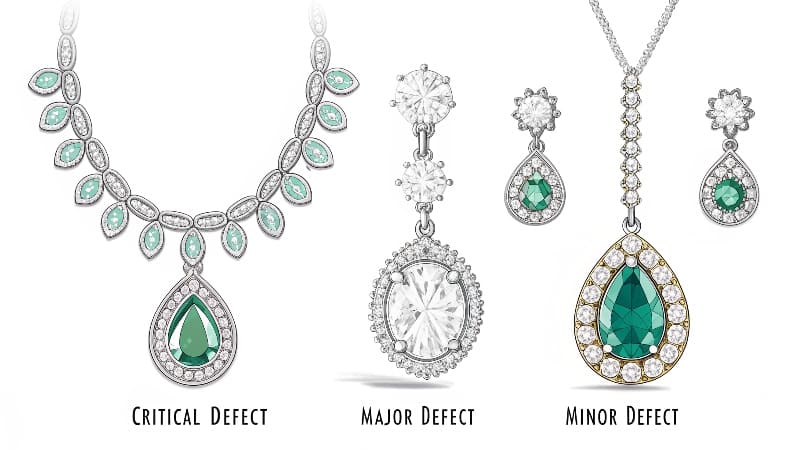
Over the years, I've seen how each of these stages can save a production run. Skipping one might seem like it saves time, but it often leads to disaster. I insist on all three for my Cring Coco products.
The Three Main Checkpoints
1. Pre-Production Inspection (PPI)3
This happens before mass production even starts. We check all the raw materials and components that the factory plans to use. Are the metals certified? Are the stones from the approved supplier? Are the enamel powders the exact Pantone colors I specified? This inspection prevents a fundamental error from ruining the entire batch from the very beginning.
2. During Production Inspection (DPI)4
When about 15-20% of the order is complete, we perform a DPI. This is my favorite inspection because it tells me if the factory workers truly understand the design and quality requirements. We can catch issues like incorrect assembly techniques or poor polishing here. It is early enough in the process that we can correct the method for the remaining 80% of the products, saving the whole order.
3. Pre-Shipment Inspection (PSI)5
This is the final check when the order is 100% complete and at least 80% packed. We use a statistical sampling plan (like AQL) to check a portion of the goods for defects, quantity, packaging, and labeling. This is your last chance to stop a bad shipment from leaving the factory and reaching your customers.
What Common Defects are Found During Inspections?
Your new jewelry looks great when you first open the box. But soon, customers start complaining about scratches, discoloration, and broken parts. You need to know the common defects to look for.
Common jewelry defects include scratches, dents, poor polishing, uneven plating, and weak solder joints. Other issues are incorrect colors, loose stones, faulty clasps, and sharp edges. These are categorized as minor, major, or critical defects.

To manage quality effectively, you and your factory must agree on how to classify these defects. This system helps you decide whether to accept or reject a batch based on the inspection report. It removes emotion and makes the decision a simple business process.
Classifying Defects
Critical Defects
These are the worst problems, usually related to safety. A sharp point that could cut a customer, or the presence of a banned chemical like lead, is a critical defect. If an inspector finds even one critical defect, I typically reject the entire shipment. There is no tolerance for these.
Major Defects
These are problems that a customer would likely notice and would cause them to return the product. A large, visible scratch on the front of a pendant, a stone of the wrong color, or a clasp that does not close properly are all major defects6. We set a very low tolerance for these.
Minor Defects
These are small imperfections that most customers would not notice. For example, a tiny pit mark on the back of an earring or a slight variation in polishing in a hidden area. A few minor defects7 in a batch are usually acceptable, but too many show that the factory's process is not well-controlled.
What Tests are Performed?
Your jewelry looks beautiful and feels well-made. But it could contain harmful materials, which can lead to huge legal problems and expensive recalls. You must learn about the essential safety tests8.
Essential lab tests include X-ray fluorescence (XRF) scanning9 to check for lead, cadmium, and other heavy metals. A nickel release test is also crucial for skin-contact items to prevent allergic reactions, especially for products sold in the EU and US.
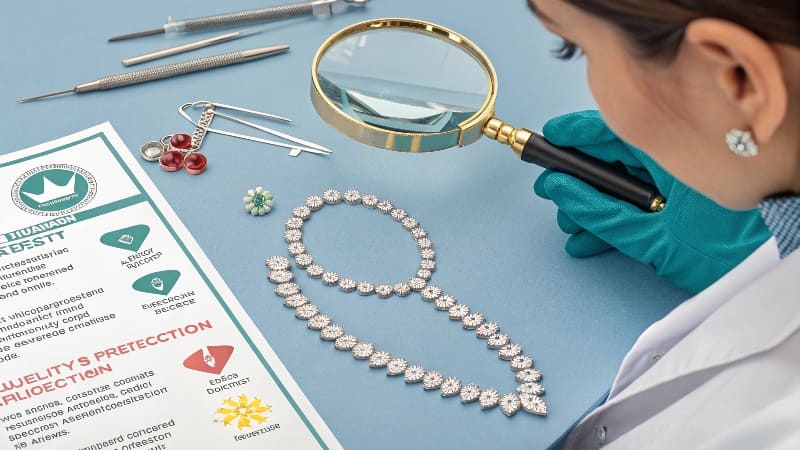
These tests are not optional for me. They are a core part of my responsibility as a brand owner. They are not just visual checks; they require specialized lab equipment and knowledge of global regulations.
Essential Lab Tests
1. Heavy Metal Content (Lead & Cadmium)
I require my suppliers to provide an XRF test report for both raw materials and a sample of finished goods. An XRF scanner is a device that analyzes the metal composition of an item. It gives an instant reading and can detect harmful substances. The legal limits for lead and cadmium are very strict, especially in the US under the CPSIA regulations, and you must have proof of compliance.
2. Nickel Release Test
For any part of the jewelry that has prolonged contact with the skin, like earring posts or necklace chains, this test is a must for the European market (under REACH regulations). The test simulates how sweat interacts with the metal to see how much nickel leaches out over time. High nickel release is a common cause of skin allergies, and this test protects your customers and your brand.
3. Plating Adhesion and Thickness
We need to ensure the plating will last. A simple "tape test," where special tape is applied and pulled off, can check if the plating adheres properly. To check the thickness of gold or rhodium plating, we can use the same XRF machine to make sure it is as thick as we paid for.
Are There Specific Concerns for Children's Jewelry?
Designing a jewelry line for children seems like a fun project. But the safety regulations are incredibly strict and much more complex than for adult jewelry. You must understand the specific rules to protect kids.
Yes, absolutely. Children's jewelry faces much tougher rules. This includes extremely low legal limits for lead and cadmium, physical tests for sharp points, and checks for small parts that could be choking hazards. Durability testing is also required.
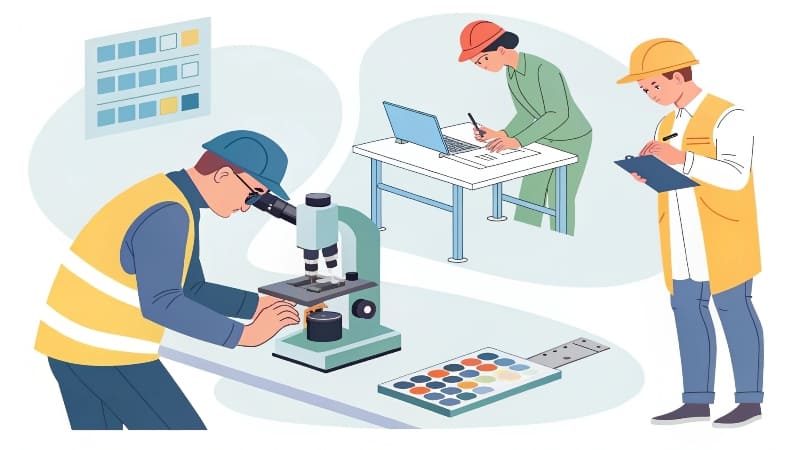
When I design anything for children, safety is the number one priority, even before aesthetics. The legal liability and moral responsibility are enormous. The rules are different and much more demanding.
Safety First for Kids' Jewelry
Chemical Safety
Both the US (CPSIA) and the EU (Toy Safety Directive) have near-zero tolerance for lead and cadmium in products intended for children. The limits are measured in parts per million. You cannot guess about this; you must have certified lab reports from a third-party testing facility for every single component.
Physical Safety
This goes beyond chemical content. The physical design of the jewelry must also be safe.
- Small Parts Test: If a piece of jewelry, or any part that breaks off, can fit into a specific small cylinder (called a choke tube tester), it is considered a choking hazard for children under three. The entire design must be engineered to avoid creating such small parts.
- Use and Abuse Tests: We must test children's jewelry10 to simulate how a child might play with it. This includes tension tests (pulling), torque tests (twisting), and drop tests. The goal is to ensure the item does not break in a way that creates a sharp point or a small part that could be swallowed.
Conclusion
In short, thorough inspections at every stage are not a choice. They are essential for ensuring quality, guaranteeing safety, and building a trustworthy brand11 that your customers will love.
---Understand the inspection process to avoid costly mistakes and protect your brand. ↩
Learn how to create an effective checklist that ensures quality and consistency. ↩
Explore the significance of PPI in preventing production errors before they start. ↩
Discover how DPI helps catch issues early in the production process. ↩
Learn about PSI as the final check to ensure product quality before shipping. ↩
Learn how major defects can affect customer perception and returns. ↩
Explore how to classify minor defects to maintain quality control. ↩
Discover the necessary safety tests to ensure your jewelry is safe for consumers. ↩
Learn how XRF scanning helps detect harmful materials in jewelry. ↩
Explore the strict regulations for children's jewelry to ensure safety and compliance. ↩
Find strategies to build a trustworthy brand that resonates with customers. ↩
